
Having lived in the Alpujarra, Southern Spain and also in the capital, Madrid, I have spent significant time, practising the faith ‘Spanish style’. Whilst that may sound somewhat trite, it is absolutely true that nations often have their own way of living their faith.
The Spanish are very passionate and extremely expressive. During Holy Mass or in Church it is not unusual to experience tears flowing from pious eyes. Passionate gestures—such as the kissing of statues and grand Processions and prayers— may move one’s own soul to tears.
The Spanish love their statues and they cover them with kisses and caresses, as they pray for intercessionary aid.
Most churches have a large statue of the Sorrowful Virgin, Her heart pierced by seven swords. Weeping, She holds a beautiful lace handkerchief to wipe away Her tears.
These statues are brought out to the streets on Good Friday, where the whole community follow the procession, weeping with our Lady for the death of Her son.
At Christmas, of course, the mood is very different, yet just as distinctively Spanish. There is much celebration but also Adoration before the Baby Jesus, El Santo Nino (the Holy Child).
Whilst the Spanish are jubilant and celebratory throughout Christmastide, they go to town at Epiphany.
Theirs is the way of the Kings, who not only come to pay homage to the Infant King, but also to bring presents in huge sacks, for all the children of Spain.
These Three Kings bear gifts from the Orient for the Child Jesus. The star has led them to the Divine King and they bow down in awe before Him. Kneeling humbly at His feet, they spend time in Adoration of His Royal Kingship.
And just as these Three Kings adore the Child King, the Spanish faithful do too.
At Holy Mass, from Christmas Eve to Epiphany, the Infant King is taken from the crib and brought to the altar for the faithful to worship.
Each person kisses the Divine Infant, not only in celebration of His birth, but also with wonder before the King who reigns above all.
The Spanish love children, all of them, whether they are family or not. They enjoy dressing them up, particularly for First Communion or Confirmation. They spoil them with sweets and goodies. The children stay up late with the adults, for they are always part of life. Generally there is far less separation between the children and adults, than I have known in other countries.
This particular love and respect for the child is shown in their reverence towards the Child Jesus.
For it is not only at Christmas that the Divine Infant is honoured in Spain. In many churches one will find statues of El Santo Nino.
Now, the spirituality of that great Spanish saint, Theresa of Avila incorporated this custom of expressing reverence for the Infant King. At her time, there was a renewed emphasis on the Incarnation. As a result, fervent devotion to the Child Jesus was practised.
This focused on the importance of God having become a tiny child, in part perhaps to appeal to the child in each of us. Jesus spoke of this, when He said:
Unless you be converted, and become as little children, you shall not enter into the kingdom of heaven. Whosoever therefore shall humble himself as this little child, he is the greater in the kingdom of heaven
Matthew 18:3-4
As the Rev. Ludvik Nemec writes in his book, The Infant Jesus of Prague, St. Theresa of Avila:
emphasized the devotion to the Holy Childhood, and the humane littleness of God’s greatness as a means of establishing the proper relationship of creatures to their Creator. Her mysticism found a way to express these spiritual values in the representation of the Holy Child as King, Whom only the little ones are willing and able to worship.
In other words, she pointed towards the mystery of the Incarnation, where God, the greatest of all beings, became a tiny child. And she stressed the subsequent importance that we, the faithful, relate to Him, as children, through the honouring of the child within ourselves and in our communities.
On the Tradition of the Infant King of Prague

As we honour the Infant Jesus, we are not only honouring the Babe of Bethlehem, wrapped in swaddling clothes and placed in a manger. Just as the three kings travelled to honour Him, we are paying homage to Christ the King.
And whilst many of the statues of the Child Jesus in Spain are clothed as though He were in the manger, there is also a tradition to present Him dressed in finery and lace, as King.
It is such a statue that found its way from Spain to Prague in the Sixteenth Century.
In 1556, a statue of the Divine Infant King, resembling a child of four years old, travelled with a lady of Spanish noble blood, Maria Manriquez de Lara. A precious heirloom within the Royal Family of Spain, the statue was already regarded by them, as a mediator of Divine Grace. It was therefore seen to be a priceless treasure.
Maria Manriquez de Lara took the statue to Prague, where she married a Czech nobleman. On her deathbed, she gave it to her daughter, the Princess Polixena.
And it was given to the Carmelites in Prague, who were situated in the church of Our Lady of Victories, to be entrusted with this treasure. It was donated to them in 1628, by Princess Polixena.
The statue was dressed as a young King. Yet, His attire was far less ornate than the elaborate dress we are now accustomed to.
The statue of the Infant King remains in the Prague Carmelite church today. It is described in a small booklet by M. E. Lynch, who speaks of an altar
of marble, richly decorated, … the centre of attraction for all who enter the church. On it is enthroned a beautiful little statue, of wax, about nineteen inches high, representing the Divine Infant Jesus. It is clothed in a royal mantle, and a beautiful crown, set with precious stones, rests on its head. Its right hand is raised in blessing, while its left hand holds the globe of sovereignty. This image, with its benign countenance, full of grace and majesty, is known as The Infant Jesus of Prague.
And in an an old book published in Kempt, we find this beautiful account:
All who approach the miraculous statue and pray there with confidence receive assistance in danger, consolation in sorrow, aid in poverty, comfort in anxiety, light in spiritual darkness, streams of grace in dryness of soul, health in sickness, and hope in despair. From its beautiful eyes dart sparks of heavenly love; its smiling lips offer us spiritual riches, and its beauty conquers all hearts.
For certainly, as we shall see, there are many accounts of cures and graces received, through prayer and devotion to the Divine Infant of Prague.
The tradition has formed through these miraculous stories, including those of a monk in Prague who heard the Child Jesus speak to him of which we shall tell. All of this would lead to a formal coronation of the Infant of Prague …
But before I continue telling the miraculous story of the Infant King, I should like to interject a little personal interlude . . .
So Long As You Venerate this Image …
Almost two years ago, during Christmas of 2011, I felt a strong urge to acquire a statue of the Divine Infant of Prague. I knew nothing of this devotion. I simply believed that our Lord willed me to honour Him in this way.
One of our local churches sold such statues, so, I bought one. Instantly I felt a love for Him, very sweet and tender. I was thrilled to have Him blessed by Canon Olivier Meney of the Institute of Christ the King Sovereign Priest. I placed Him close to the French Sacred Heart statue, in our bedroom.
A week or two later, I was rummaging through a box of old prayer cards in a charity shop and discovered an old booklet of the history and devotions to the Miraculous Child Jesus of Prague.
I bought it, read it and have been praying to Him with certain devotions from this booklet ever since.
When I first began praying to the Divine Infant of Prague, I noticed certain new feelings of contentment and well-being. I experienced an unusual sense of wonder and grace in my life.
When I cease to pray to Him, there is a distinct difference. I notice the absence of these qualities. I feel less well and my life does not flow so gracefully. For, I have become used to these gifts and the lack of them is surely and deeply missed.
Yes, there was a palpable difference to my life, once I took up this devotion.
When I felt distressed, or simply out of sorts, I would disappear to the bedroom and pray the devotions. I could almost guarantee that I would feel better and I usually did. And this is how it has continued.
I find my personal experience interesting, regarding the history of the Divine Infant of Prague. In order to explain this, let us now return to that history.
For on the death of her husband, Princess Polixena vowed to live her life in piety and charity and she took to caring for the Carmelites of Our Lady of Victories. Although the statue of the Child Jesus was very dear to her, she offered it to them saying:
I hereby give you what I prize most highly in this world. So long as you venerate this image you shall not want.
These words are worth repeating, “So long as you venerate this image you shall not want.” For, they are key to that which I want to emphasize here, both within the history regarding the Divine Infant of Prague and in my personal experience.
On receiving this miraculous gift, the Carmelite monks began praying devotions to the Divine Infant. After being almost destitute, they began to receive many blessings, both spiritual and temporal. They were even granted regular financial support.
The Child Jesus, Infant King and Brother Cyril
And here we come to the story of Brother Cyril of the Mother of God, a novice at the time the statue was donated to the monks. He particularly favoured the Divine Infant and through prayers and supplications to Him, found incredible relief from intense interior struggles. It was his fervour that inspired the other monks to pray to the Divine Infant.
After a few years, during which the monks prayed devotedly to the Divine Infant, the Thirty Years war disturbed their peace. They were removed to Munich. This included Brother Cyril of the Mother of God.
Those who were left neglected to pray the devotions and the community began to decline. Their Protestant foe broke in and took over the church.
The statue of the Divine Infant was thrown onto the floor behind the altar. In this violent act, His hands were broken off. And there He lay hidden, in a heap of rubble, for seven years.
It was in 1637 that the young novice, now Father Cyril of the Mother of God, returned to the convent of Our Lady of Victories in Prague.
He searched high and low for his Infant King. On finding the statue, he was beside himself and showed It much affection. Placing it on an altar, he knelt before Him and prayed.
From this moment on, Father Cyril renewed his devotions to the Infant King, again displaying great fervour. At one point, he distinctly heard the Child Jesus speak to Him, saying:
Have pity on Me, and I will have pity on you. Give Me My hands, and I will give you peace. The more you honour Me, the more will I bless you (my emphasis).
Through Father Cyril’s impassioned prayers, Heaven responded. Divine providence provided the necessary funds to repair the broken hands of the statue.
In 1639, the Baroness, Elizabeth Kolowrat, was miraculously cured, through petitions to the Divine Infant. She and her husband gave much financial help to the poor monks.
Devotion to the Child Jesus of Prague was restored and became more fervent than ever.
As an old, anonymous Irish devotional booklet The Holy Infant of Prague tells us:
The statue was at last restored to its place in the church, but alas, not to its former position in the devotion of the friars. With the exception of Father Cyril, the friars were indifferent to its appeal. Hard times and continual dangers had been their lot, and besides none of them had personal experience of the bounties and blessings which had followed on devotion to the Holy Child in former years….
The plague was still raging, some of the friars had died and the Prior … was lying grievously ill. This was Father Cyril’s opportunity. He implored his brethren to come with him and prostrate themselves before the Holy Child and ask Him to spare the life of their beloved Prior.
They went to the Prior and begged him to promise that if Our Divine Lord restored him to health he would establish devotion to the Divine Infant in the monastery. He made the promise and also vowed that he would celebrate Mass nine times before the statue. Immediately a wonderful improvement was noticed in his condition, and in a few days he was able to be up and about his duties.
Many more miracles occurred due to veneration of the Divine Infant of Prague and devotion to Him began to spread across the Catholic world.
And as aforementioned, in thanks giving for graces and healings received, on April 4th, 1655, The Divine Infant of Prague, was solemnly crowned by the auxiliary Bishop of Prague.
A crown of gold, decorated with pearls and gems, was placed upon His head. This helped to distinguish Him from the Child Jesus of Bethlehem and to firmly establish devotion to the Infant King.
In his book, Father Ludvik Nemec writes:
The royal representation of the Infant King became the devotional trademark by which the Infant of Prague fascinated the whole world. He believes that devotion to the Infant of Prague rose out of ‘the need of the faithful to become subjects of the Great King of Kings.
In other words, the faithful were searching for a way to honour their Divine King, Who humbled Himself to be born in a manger in Bethlehem.
But, rather than honouring Him wrapped in swaddling clothes, they sought to recognise Him in His Royal splendour. They therefore wished to worship Him dressed in Kingly attire. As Father Nemec suggests, the faithful longed to bow down, as ‘subjects’ before the ‘Great King of Kings’.
Of this, M. E. Lynch writes:
How interesting it is to find that the Holy Infant of Prague bears all the marks of Christ the King … There is the crown and orb, and his right hand raised in blessing. Only the sceptre is missing; but that is because the Divine Infant is represented as blessing the world, instead of ruling it.
Today, many churches have a statue or even, as the St. Terese church in central Dublin, an entire chapel dedicated to the Divine Infant. And in Prague at the church of Our Lady of Victories, the original miraculous statue of the Divine Infant still resides, bathing pilgrims in His warm, sweet light.
A friend of mine who recently visited the Shrine in Prague and who prior to this, had no particular experience of the devotion, said how she was deeply moved by the visit. She sensed the presence of something very special in the chapel, something she believed would bring healing.
I encourage prayer to the Divine Infant of Prague, for as I have said, I personally experience well-being and a sense of grace working in my life, due to the practising of this devotion.
We all know the qualities of comfort and warmth that glow through the Christ Child at Christmas. In my experience, the Infant Jesus of Prague exudes these qualities. For He, of course, is the Christ Child. He brings a very warm, almost tangible sweetness, like a child, when it is totally happy and content. He brings Heavenly joy.
So, with The Divine Infant of Prague, the greatness of God is represented to us, as a small child. Yet, unlike the Babe of Bethlehem, He is dressed in royal splendour. He is the King of Kings and is come to bring us grace from Heaven.
He stands stately before us, right hand raised in benediction. As He Himself said, ‘The more you honour Me, the more will I bless you.’
And as we pray to Him, we honour the true King of Kings and receive the graces He bestows upon us, we, His humble subjects.
Divine Infant of Prague, have mercy on us.
Foreword for Monarchy by Roger Buck
Buying Books at Amazon Through These Links Gives Us a Commission. This Supports Our Apostolate. Thank You if You Can Help Us Like This!

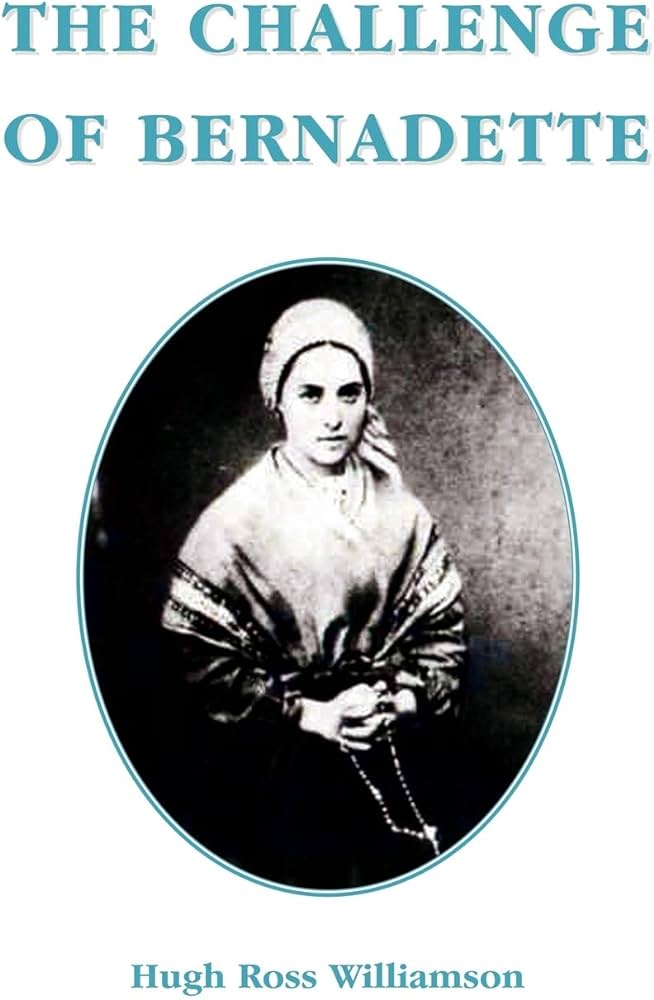




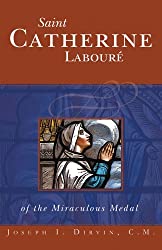
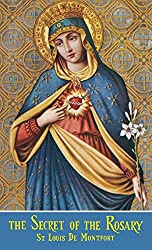
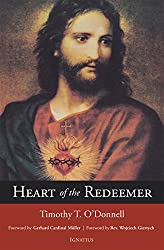
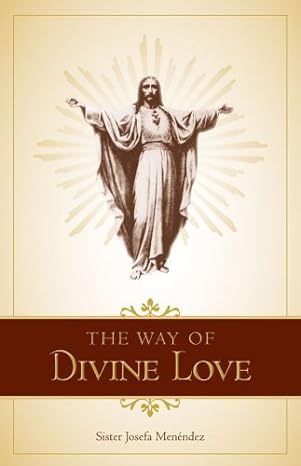
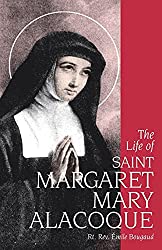



Comments
comments are currently closed
2 responses to “On Devotion to the Divine Infant of Prague”
[…] « On Devotion to the Divine Infant of Prague […]
Devotion To The Child Jesus Goes
[…] esides none of them had personal experience of the bounties and blessings which […]